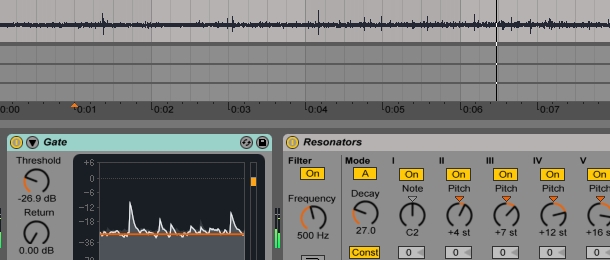
This is the second instalment of my series on how to use field recordings and found sounds in your music production. Last time, I went over the basics of how to capture found sound , and now it's time to look at some ways of processing these sounds to add spice to existing tracks and make entirely new (and entirely awesome) musical textures! I'm going to be working with sounds from 'Elements', which is a collection of our very best rain, wind and water recordings: check it out.
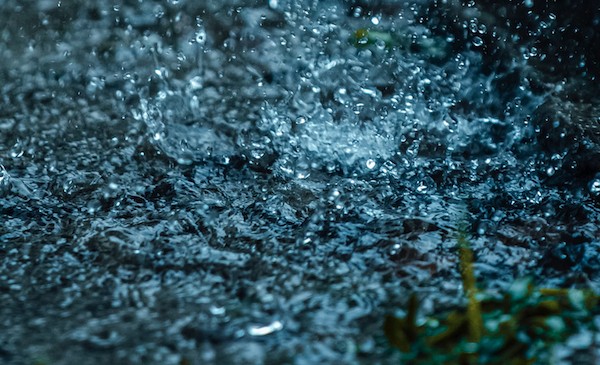
Grain Gating
One of the easiest ways to quickly get some interesting material for further processing is to set up a gate on the recording. Above is a snippet of a recording of rain falling on a tarpaulin. This contains lots of smaller drops and also a few bigger hits, which were closer to the mic. What this means is that there is a nice range of levels to work with, with a background of quieter impulses punctuated by some louder ones.
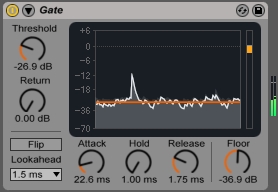
You can see that I've set up the gate's Threshold to somewhere below the peak of the smaller impulses (so they'll go through) and above the point where the levels bottom out, which is where the background ambiance level lies. With very short Hold and Release times, this lets us isolate the drops from the background somewhat.
Now that we have increased the dynamic range by silencing the quietest portions, we can use the gate's output as the input to some other process. One of my favourites is Ableton Live's 'Resonators' FX module, which works great with impulsive sounds like our gated rain.
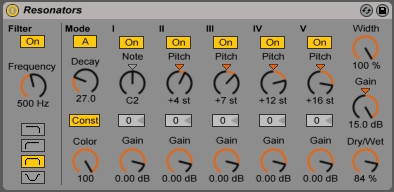
I've pitched the individual resonators so that they make a nice major chord, and taken down the Decay knob so that the smaller impulses aren't completely swamped in the resonance. This leaves us with a twinkly, metallic texture'
' which sounds great with a little bit of reverb on it to smooth out the end result a little!
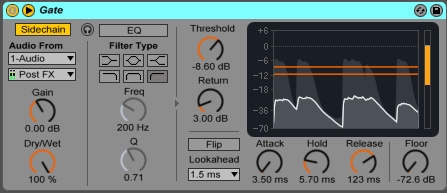
Sidechain My Heart
One of the best things about field recordings is how they instantly cloak a mix in spaciousness and atmosphere. But we can take this process a little further to get trippier results' Here's a drum loop from 'Lost Archive':
It's got some space around it already with the touch of reverb in there, but we could add a little extra air to it by using one of the wind recordings from 'Elements'. This is a snippet of a recording of light winds shaking leaves off the trees in a wood, complete with bird song:
I've got both pieces of audio lined up on separate tracks. If I call up the gate again and set its Sidechain input to receive the drum loop signal, I can gate the wind recording according to what the drums are doing!
A longer Release time on the gate mimics the longer decay that reverb adds to drum hits. It also allows snippets of the field recording to poke through in time with the drums, meaning that we get weird little pieces of bird song interspersing our beat!

I'm also adding the drum signal to the Sidechain input of Live's compressor, which i've set to 'Expand' mode. This means it raises the level of the field recording when the drums are playing (if it was in either Peak or RMS mode it would duck the field recording whilst the drums were sounding). I like the effect, so why not crank it up a little bit like this'
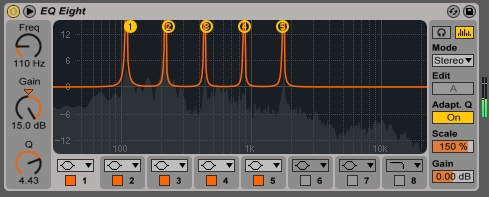
No Band Pass, No Entry
Filtering field recordings generally leads to intriguing results, but sometimes the settings available on standard filters don't go far enough. Here's one of the water recordings from 'Elements':
It's nice enough on its own, but we could, for example, run it through a bank of band pass filters to accentuate different pitches within the constant movement of the stream sound. Now, the filters in your DAW probably don't have high enough Q settings to let them self-oscillate: that kind of resonance can get dangerously loud. The 'bell'-shape filters in Live's EQ Eight do have a lot of Q to play with, though - the problem is, the EQ Eight is a parametric EQ. Its bell filters enhance or diminish frequencies, but don't remove everything else in the way a band pass does.

So if we add a bunch of high-Q boosts, as in the photo and recording directly above, it sounds like resonance plus the stream. The trick here is to copy the field recording over to another track, and invert the polarity of the copied track using the Utility module. Now, because you have two instances of the same signal with opposite polarities, you get silence - the two signals are exactly cancelling each other out. When we add our EQ back (onto only one of the copies!), however, we hear only what is different between the copies, which is the EQ.
So we've now managed to isolate the pitches we want from the stream recording, and diminished the rest sufficiently to have created a sound with an entirely new character. Get automating those EQ Eight frequencies and we've got ourselves an utterly unique, watery pad track!
I hope you've enjoyed this little trip through what's possible with found sound and been inspired to check out some of our collections of Field Recordings. Next time, I'm going to look at what you can achieve by layering field recordings in mixes, but until then, get creating!














